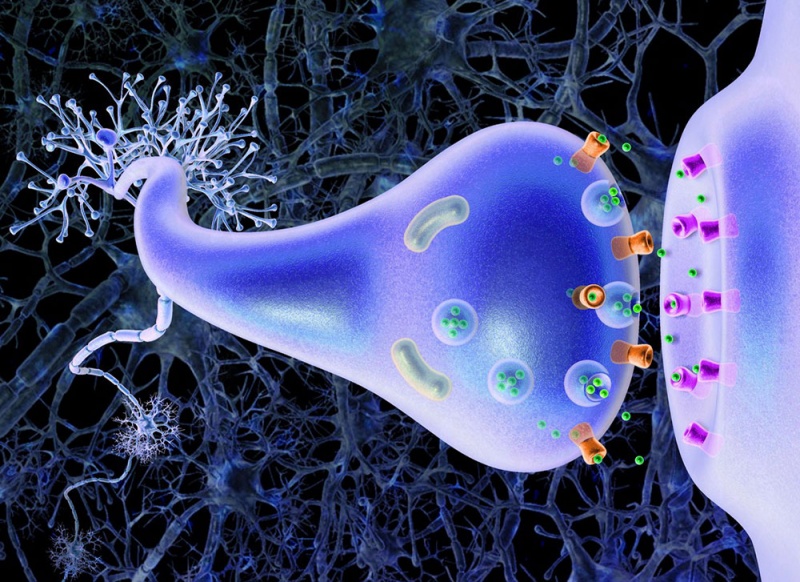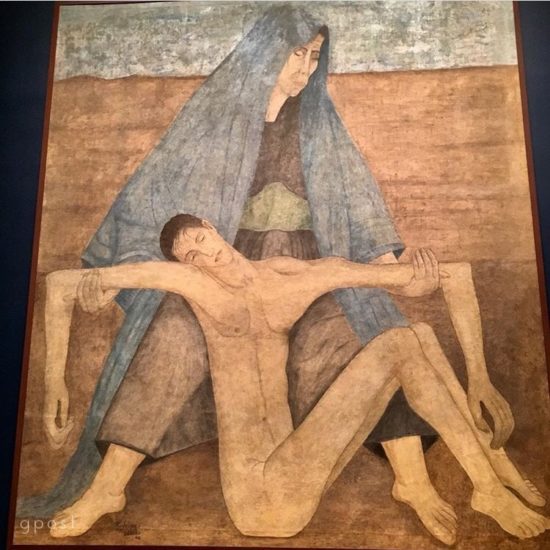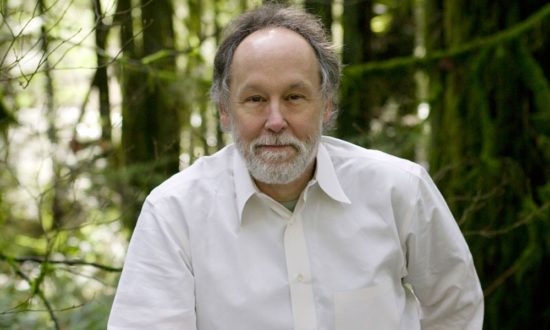
One of the conclusions that might be drawn from last week’s post is that Americans aren’t nearly as generous as they used to be. Why? Because we’re no longer able to muster “a celebrity soup” of sponsors behind well-meaning causes like “famine relief in the horn of Africa.”
These days, if the recent Super-Bowl ads are any indication, we’d rather deploy the likes of Beyonce and Jennifer Lopez to sell stuff like Verizon plans, Dunkin’ Donuts (and themselves, of course)—while we’re presumably basking in the stun-guns of their celebrity. I suppose the theory is that we’ll feel better about ourselves eating a donut because a goddess like J-Lo eats them too. (Yeah, right) But since a minority of viewers are susceptible to delusions like this, they keep serving them up to the rest of us.
“Viewer identification” with products like these should be making the Super Bowl the most powerful sales vehicles of the year. But beyond the faux “feel like a celebrity too” experience, shouldn’t marketing success depend on how many of us are actually buying more donuts or wireless plans because of them? I wouldn’t be at all surprised if this year’s Super-Bowl ads totally failed to boost consumption if “more” was actually their mission.
But it might have been otherwise if advertisers had plugged into the far deeper currents that are running through Americans these days.
In this country I remember when there were social institutions (other than the National Football League) competing for our allegiance and attention.
But we already know that fewer of us are going to churches and other houses of worship every weekend. And beyond the social justice warriors and conspiracy theorists, the vast political middle no longer affiliates very strongly with either political party, whatever the draw of a marquee huckster and his supposed foil. Local organizations formed around shared work, heritage or region are struggling for members when they’re surviving at all. On the other hand, American sports—which always appealed to some—have gained near-monopoly status when it comes to belonging to something bigger and (so we’re told) more important than ourselves. That means an event like the Super Bowl becomes a kind of national ritual with its own priests, altars and a stadium full of true believers that get trotted out for us to share in on an annual basis.
These days when considering the faces that we use in public, it looks like a lot of Americans might be fans before we’re anything else. And if your team happens to melt-down after early signs of greatness (like my team in Philly did this year) well, then our fandom easily shifts to, say, the incumbent Super Bowl champions or this game’s underdogs, as well as to the famous faces that dot the stands, the half-time spectacle, and the ads that hold us captive in our seats for 3+ hours.
With 120 million pairs of eyes glued to their Super Bowl screens on February 11, it’s fairly easy to make the case that National League football (and its Big Game in particular) provides the town square or national house of worship where the greatest share of Americans gather during the fall and winter months, culminating in a kind of High Holy Day when February finally rolls around.
So for the marketers—convincing their clients to pay $7m for every half-minute of product promotion—the ads themselves provide a kind of “read” or “diagnosis” about Who (exactly) the ad creators Think We Are these days, and therefore, How Best to Reach Into Our Hearts as well as Our Wallets before we’re on to the next riviting visual.
Sadly this year, neither the viewer diagnosis nor the sad parade of ads that it spawned hit their intended mark.

Ben Affleck crashes Jennifer Lopez’s party, but only Matt Damon seems embarrassed by the ridiculousness in what, we’ve been told, was one of the Super Bowl’s most beloved ads.
In an op-ed she wrote around 2023’s Super Bowl, WSJ columnist Peggy Noonan described her view of its advertisements this way.
I have been watching these ads closely for 40 years, for fun but also to hear the inner dialogue, the sound of a nation talking to itself as it sells things to itself, which, in America, has always been about as intimate an act as there is. [emphasis mine]
Indeed, even more so than sex.
Noonan knows this because she’s been a kind of marketer herself, first deploying her skill with words and their particular heartstrings to build affiliation with her former boss (the already kindly-sounding Ronald Reagan) when he was president and she was one of his speech-writers.
What the marketer in Noonan saw last year was a Super Bowl audience made up mostly of Americans still suffering a pandemic hang-over, experiencing new assaults from inflation at the grocery store and gas pump, and increasingly worried about the arc of their day-to-day lives. So why, she wondered, were the ads she’d just seen “jittery, rather cruel and cynical—Super Bowl ads for a nation of losers.” She thought “the ad makers must have asked themselves: What does America want? And answered: dumb, loud, depthless and broken.”
It wasn’t at all the audience she was seeing last year, and certainly not what she thought any of us needed as a sales pitch. Noonan began, rather grandly, with how she knows that the stupid and cynical approach “for an intimate act” like an ad pitch doesn’t work:
I’m here to say I’ve met America and that’s not what they want. What they want is ‘Help me live, help my kids live, help me feel something true.’
To those who made the commercials and pay for them: Advertising is a great and honorable craft, at its best even an art. But you can’t do it well if you have no regard for and barely even know your audience, which is your country. Why don’t you go into another line of work? Why not go to a nonprofit and dislike America from there? Or go into politics. [again, the italics are mine]
That’s not to say that some percentage of Super Bowl viewers aren’t dumb, loud, depthless” and maybe even “broken;” they surely are. But Noonan’s sympathies were going towards that “silent majority” that no one ever seems to be listening to or trying to meet where they live—the folks that Reagan (and even Bill Clinton after him) kept zeroing in on with their political-animal instincts.
We were worried last year, in need of assurance and a genuine sense of solidarity with our fellow Americans instead of some juvenile, celebrity-driven kind.
So did this year’s Super Bowl ad creators similarly miss the audience mark?
Yes they did: and even more spectacularly than they did last year.

Beyonce, trying to be inoffensive as Bar-bey, in her self-promoting ad for Verizon.
According to a quick post-mortem I saw called “Super Bowl Ads Launch Celebrity Blitz with Goal of Playing It Safe”:
The Super Bowl ads on Sunday variously appealed to America’s sweet tooth, pleaded for tolerance and sought redemption for Bud Light [after its transgender promoter led to a customer boycott]. But most shared one thing: marketers’ even deeper-than-usual desire to avoid offending anyone.
It certainly seemed true given “the safety” of the humor in last weekend’s ads. According to a marketing prof at the Kellogg School of Management, nobody was “pushing the edge of these jokes” or “hinting at anything remotely controversial.”
A related story about the Uber Eats’ ad we eventually saw demonstrated how thin-skinned (as well as simple-minded) the advertising industry thinks we’ve become. This food delivery service was apparently:
chastised for a joke in its commercial, which it [had] released online before the game, that showed a man asking, ‘There’s peanuts in peanut butter?’ while breaking out in an allergic reaction. [Well] food allergy advocacy group FARE criticized the ad, saying it featured ‘inappropriate use of humor depicting food allergies.’ FARE said Uber Easts had told the group that the commercial would run without the allergy reference [and] by Sunday, Uber Easts had posted a version of its ad on YouTube with the joke removed.
What Uber Eats attempted wasn’t even that funny. But all of the ad humor in the game was reduced to the kindergarten level, where everyone who is at least 4 years old can get the jokes and nobody would go home crying to mom or dad over what they’d just heard or seen.
The same pablum and hyper-sensitivity also seemed evident in the mild suggestions of the “He Gets Us” campaign, making its second Super-Bowl appearance this year. Over pictures of individuals “who looked different than us(?)” it encouraged viewers to love their neighbors as they say that Jesus once did. Asking “Why can’t we all be friends?” a couple of times between J-Lo and Beyonce certainly wasn’t worth their million dollar price tags when the aforementioned extremists are regularly at one another’s throats and the vast Middle-of-America is afraid of where all the gnashing of teeth, automatic weapons, and purported saviors on both ends of the political spectrum are leading them.
The 2024 Super Bowl ads treated us like we’re over-protected children who can’t handle any more dissonance or discomfort. So have Americans really exchanged “want-to-get-smarter” for “just-plain-stupid,” “resilient (in the face of challenges)” for “fragile (at the suggestion of anything unsettling”)?
Again, for that vast middle of America, I don’t think so. The Americans I know—and I’ve met some too—want to be approached like adults and to become stronger instead of weaker “in the face of it all.” By refusing to treat us the way that most of us want to be treated, the Super Bowl advertisers have (once again) failed to hear the TRUE sound of our nation “talking to itself” while “it sells things to itself,” which for those of us who’ve grown accustomed to it, “has always been about as intimate an act as there is” around here.

These days, we’re far more “rooted” than the advertisers ever imagined.
Why aren’t today’s Super Bowl ads speaking to:
- our spirit of enterprise (or our MacGiverish ability to be practical problem-solvers)?
- our commitment to fairness on every playing field (instead of wanting to treat every player like they’re equal or the same or that we’d ever want them to be)?
- our desire to win (as opposed to giving everyone who shows up to play a trophy)?
- our capability for wonder and awe (not only before the jaw-dropping beauty of our country, but also given the brightness—instead of darkness—of the unknowable future that we’re building, even now)?
Instead these ads have become one stupid dog trick after another, although substituting our favorite celebrities for the dogs of yore, because anything more demanding than this might offend somebody’s sensibilities.
I’m reminded of a post I wrote in April of 2021 when the pandemic was already somewhat “long in the tooth” called Higher Winds Are Coming. It spoke to the kinds of reserves we’d be needing because the buffeting we’d been experiencing still wasn’t over. Today, almost 3 years later, we need some of the wisdom that I tried to summon there even more.
For example, I cited Nassim Nicholas Taleb’s 2012 book, tellingly called Antifragile, which he nearly summarized in 3 of his book’s best lines:
Trial and error is freedom.
Difficulty is what wakes up the genius.
I want to live happily in a world I don’t understand.
I quoted Barry Lopez, a particular hero of mine, who asked us to remember the people that we used to be:
How much natural resilience and willingness to rely upon one another has our freedom, wealth and belief in progress allowed us to forget, but that we’ll need to remember if we’re to adapt and survive in this increasingly ‘throttled’ world?
And finally, I recalled Buddhist teacher Pima Chodron’s urging us to be more curious about the fears that make us so fragile—to bring these secret worries into the sun’s bright glare so we’re no longer as frightened by their shadowy unknowns. As I went on to explain:
With true hope, she says, there is always fear that whatever you long for won’t come to pass. Accepting that your hope is always bound up with your fear—so that you are as curious about your fear as you are about your hope—can liberate you from your own constraints.
These observations actually add-up to a pretty short list of things that are great and laudable and TRUE about most of us today:
Our spirit of enterprise, or how difficulty “wakes up” our genius.
Our commitment to a level playing field where every player has a fair chance to win.
Our capacity for wonder and even awe.
Remembering our natural resilience and our willingness to rely upon one another, maybe by consulting our personal and collective histories.
Being curious about our fears so they can never inhibit our hopes.
In a national event that claims to champion our competitive drive towards excellence, it seems natural and even necessary to further elevate The Big Game with marketing that appeals to each and every one of these capabilities, commitments and emotions.
And because they would speak not only to “who we are” but also to “the people that we want to be,” marketing to an audience that’s framed like that would sell a hell-of-a-lot more (of whatever it is that we’re selling) than the fragile and stupid ads that were on parade last weekend.
This post was adapted from my February 18, 2024 newsletter. Newsletters are delivered to subscribers’ in-boxes every Sunday morning, and sometimes I post the content from one of them here. You can subscribe (and not miss any) by leaving your email address in the column to the right.











